

Damion Smy
Ford Ranger-sized EV ute must prove itself in US before global rollout
12 Hours Ago
Australians have an incredible appetite for dual-cab utes with the Ford Ranger often amongst the best sellers. Is the limited edition FX4 worth checking out?
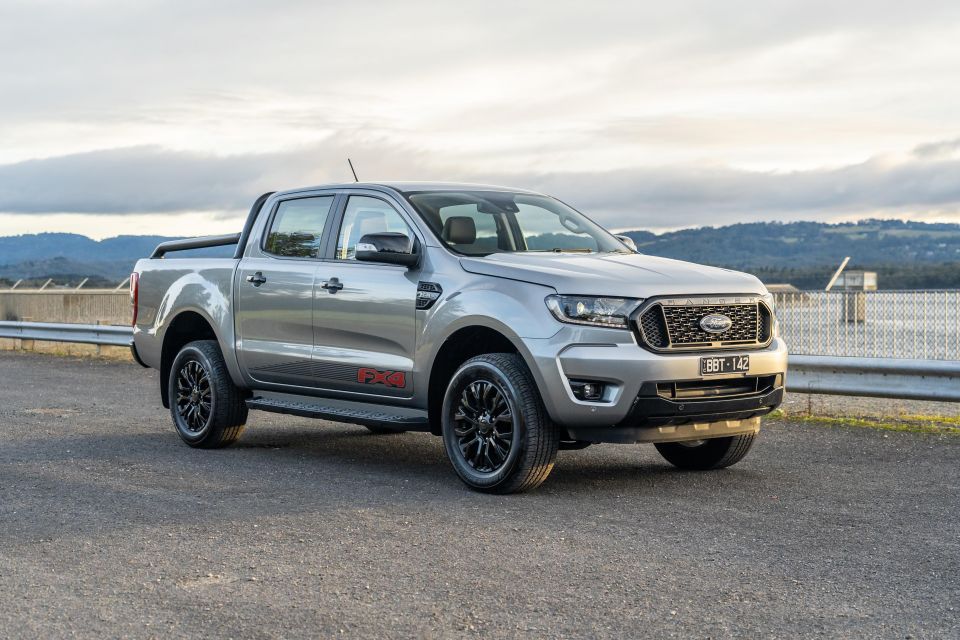


Founder
New from
$28,590
excl. on-roads

Founder
New from
$28,590
excl. on-roads


Founder
New from
$28,590
excl. on-roads

Founder
New from
$28,590
excl. on-roads
Quickly see how this car stacks up against its competition. Select any benchmark to see more details.
Where expert car reviews meet expert car buying – CarExpert gives you trusted advice, personalised service and real savings on your next new car.
Dual-cab utes are amongst the best selling cars in Australia. With generous tax deductions available and a litany of choices to pick from, there’s little wonder manufacturers like Ford are cashing in with special editions and packages designed to increase appeal.
The Ford Ranger FX4 is limited to just 1000 units and builds on the specification level already offered by the XLT, demanding a $2500 price premium.
Ford’s Ranger also remains the only ute that is designed and engineered here in Australia, giving it that slightly more local feel.
The entire Ford Ranger range kicks off from $28,790 before on-road costs for the Ranger XL two-wheel drive and caps out at $77,190 before on-roads for the top-specification Ranger Raptor.
The Ford Ranger FX4 is priced from $59,340 before on-roads with a 3.2-litre diesel and with manual transmission, and can be had with the same engine and automatic gearbox for an additional $2200.
If the 2.0-litre twin-turbocharged diesel is more your style, it’ll set you back $63,040 before on-roads with an automatic transmission only.


There are five exterior colours available with all but solid red or white an additional $650.
The only other option available is a technology package, which costs $800 and adds adaptive cruise control and semi-autonomous parking.
Buy your new car without the stress. It's fast, simple and completely free.

Great service from Travis and team, second time I have used this business would not hesitate to recommend them to anyone
Craig C.
Purchased a Ford Ranger in Sunshine Coast, QLD
CarExpert helped Craig save thousands on his Ford Ranger, now let us save you on your next new car.
Find a dealMatching the Ranger XLT for specification, the FX4 gains 18-inch alloy wheels, a sports bar, black exterior mirror caps, tailgate, and door handles. There’s an FX4 specific mesh grille and a number of stickers on the front doors and tailgate.
On the outside you’ll find those FX4-specific 18-inch alloy wheels plus bi-LED headlights, side steps, front and rear parking sensors and reversing camera.
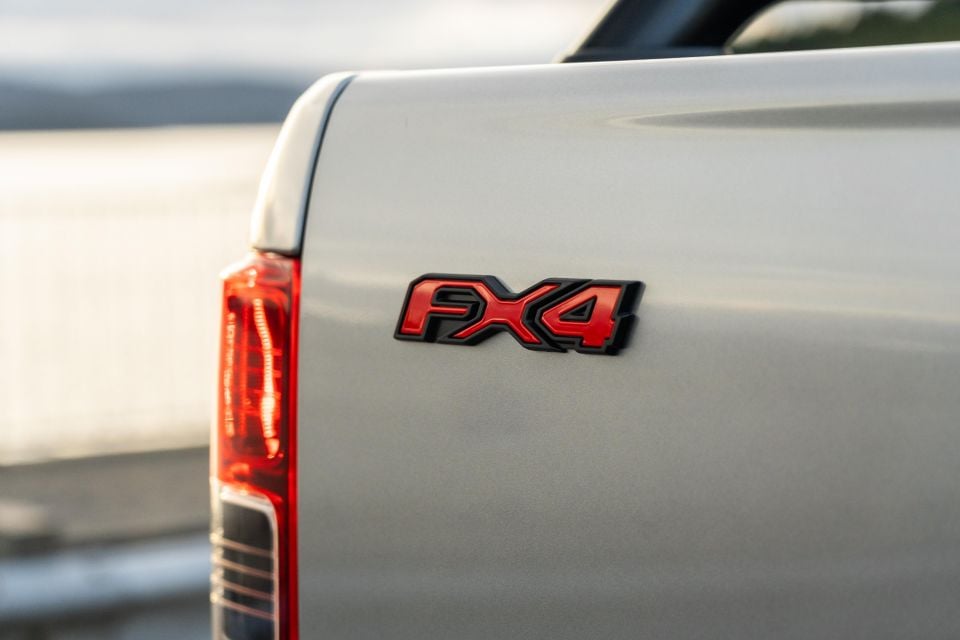
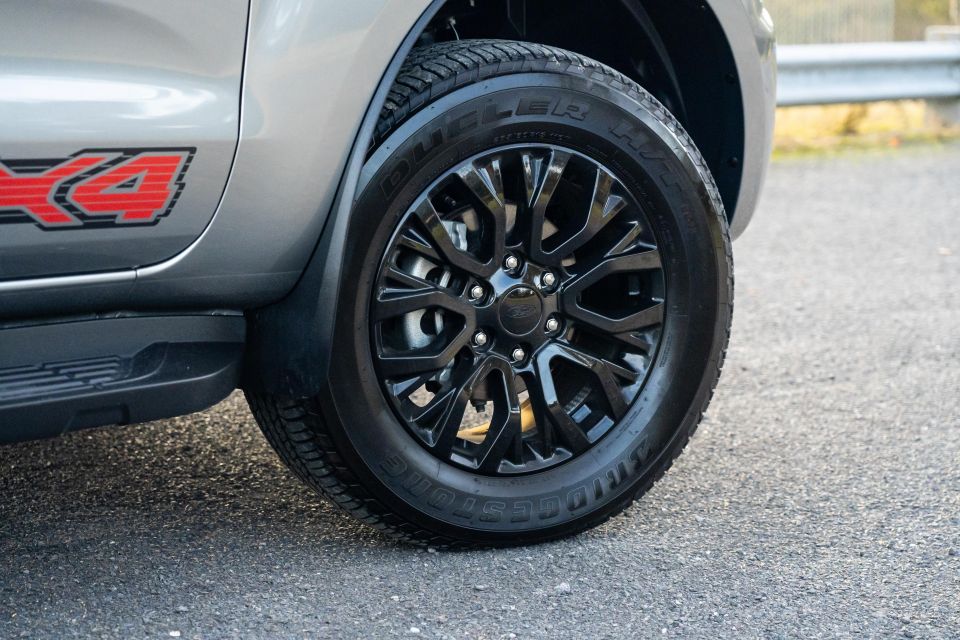
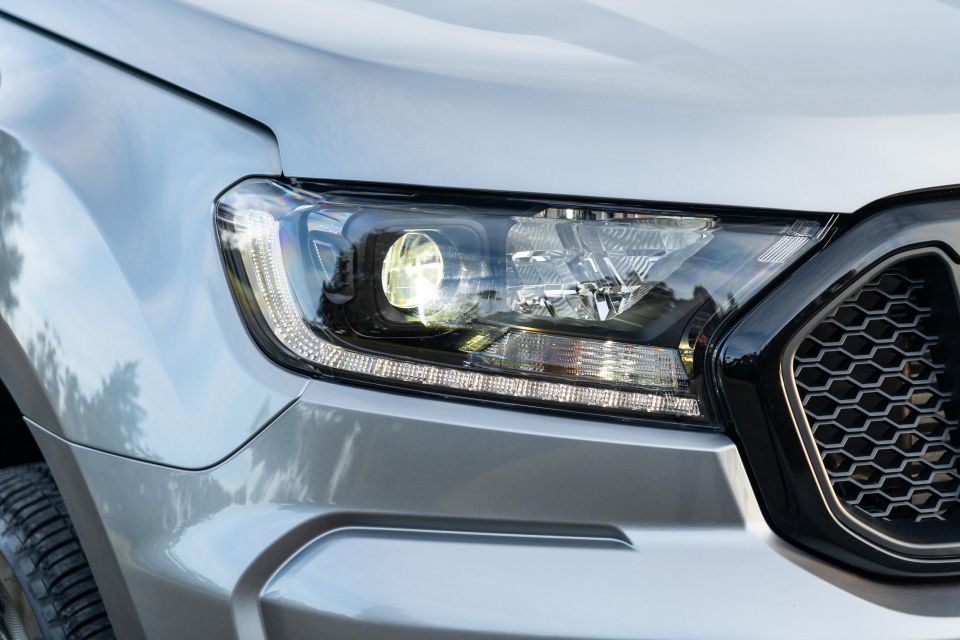

Inside you’ll find leather-accented seats with red stitching, which extends to the gear shifter and centre console instrument panel, as well as a leather-wrapped steering wheel, FX4 carpet mats and logos, dual-zone climate control, 8.0-inch Sync3 touchscreen infotainment system with Android Auto and Apple CarPlay, cruise control, rain-sensing wipers, automatic headlights, proximity entry and start, an auto-dimming rear vision mirror, and dual LCD displays ahead of the driver.
While USB points are available in the front row, Ford has cleverly integrated a USB point within the autonomous emergency braking (AEB) cluster that serves as a power outlet for dash cameras. It means owners won’t have to awkwardly run cables through bits of trim to a 12V outlet.
It feels like an eternity ago, but the Ford Ranger was first tested by ANCAP in 2015, where it achieved a five-star safety rating.
It scored a total crash test score of 36.72 out of 37, with high scores over its subset of crash results. You can read more about how the Ranger performed at the ANCAP website.
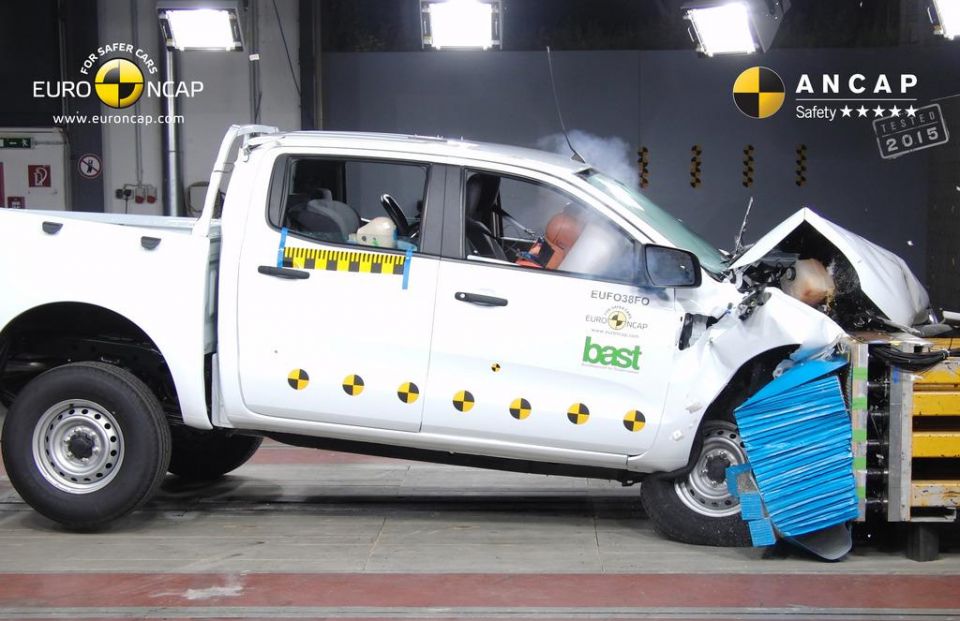
Standard safety equipment includes autonomous emergency braking (AEB) with vulnerable road user detection, lane-keeping assist, forward collision warning, trailer sway protection and anti-rollover mitigation.
There are a set of front, side, head and rear airbags, along with a seatbelt reminder for first and second row passengers.
Despite the amount of time the Ford Ranger has been on sale, the interior of the Ranger still feels fresh and nicely presented.
The top of the dashboard features soft-touch material with red stitching, while Ford’s 8.0-inch Sync3 infotainment system sits proudly near the top of the dashboard within easy reach.
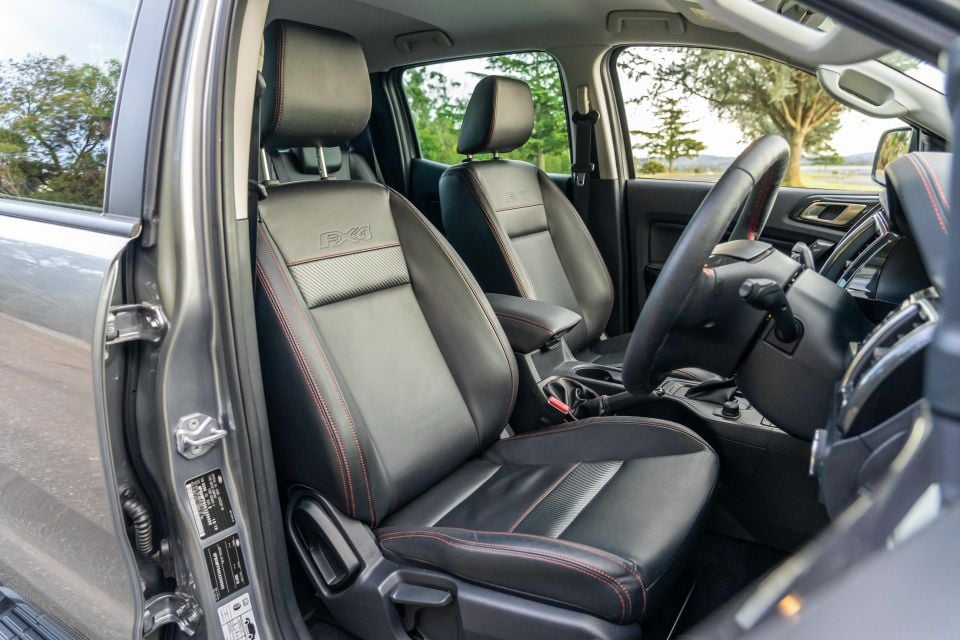
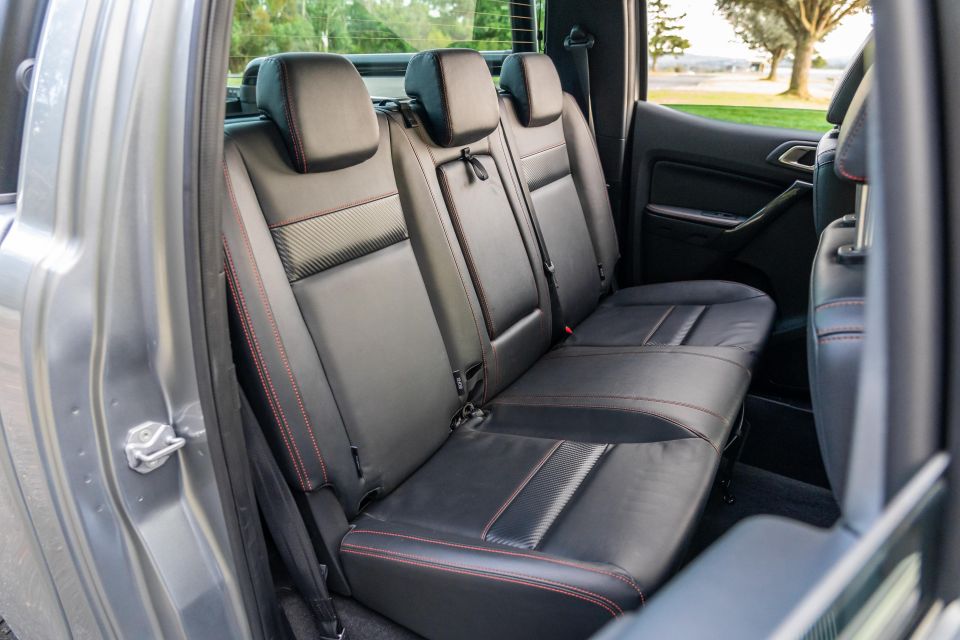
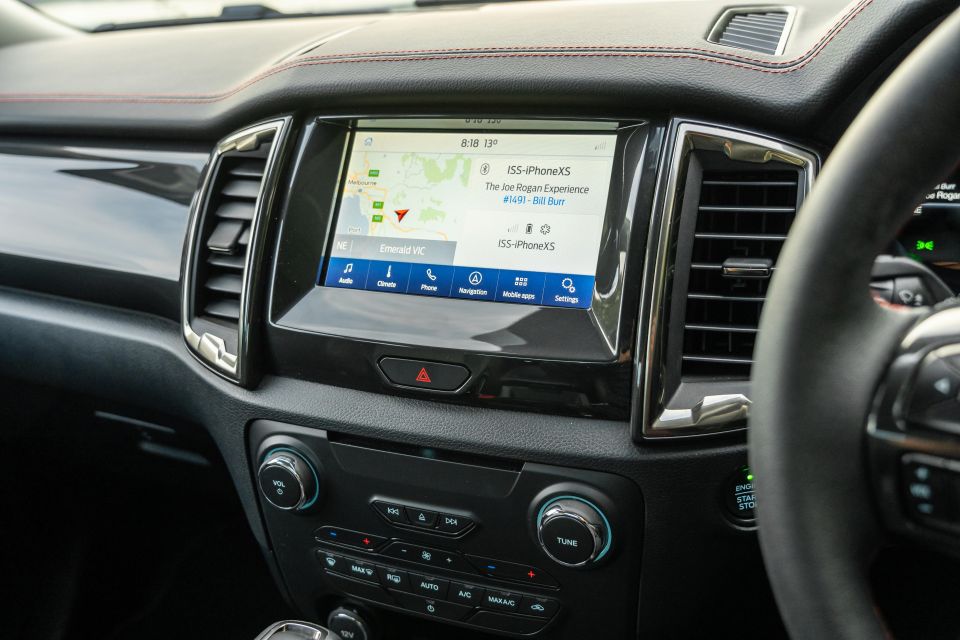

Beneath that module is the climate control unit that’s easy enough to operate while driving. As was popular at the time, the rest of the interior feels fairly hard-wearing – that’s commercial speak for a bit cheap.
Some of the surfaces are quite scratchy and feel like they belong on the entry-level Ranger, instead of near the top. That’s solidified by the fact vehicles like this are used commonly for both work and leisure, meaning families are spending more money on them, and more time in them, than ever before.
Sync3 remains one of the best infotainment systems in the business and comes standard with wired Apple CarPlay and Android Auto, with FordPass Connect now fitted to the Ranger which allows remote connectivity with the vehicle.
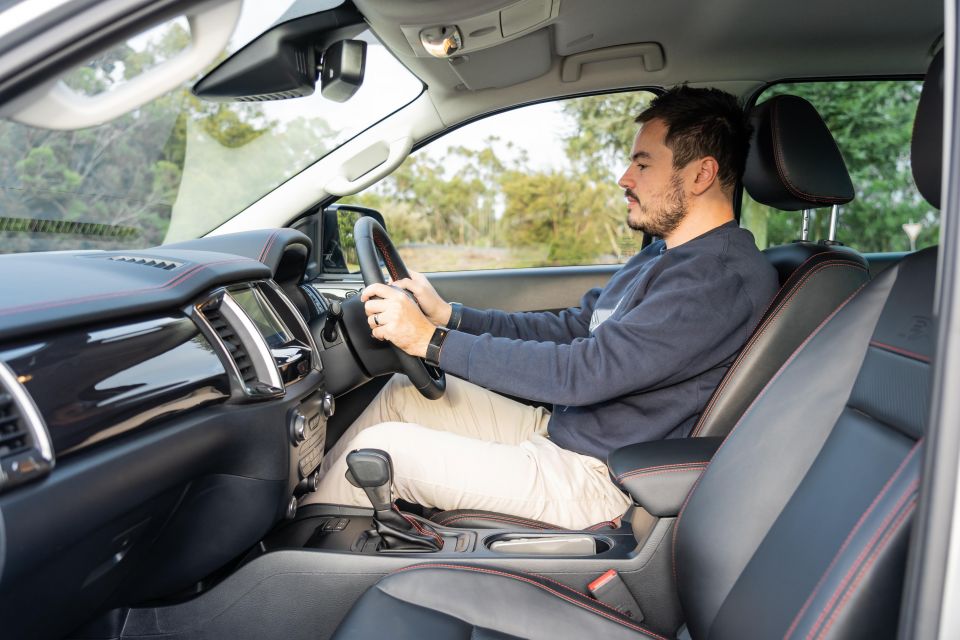
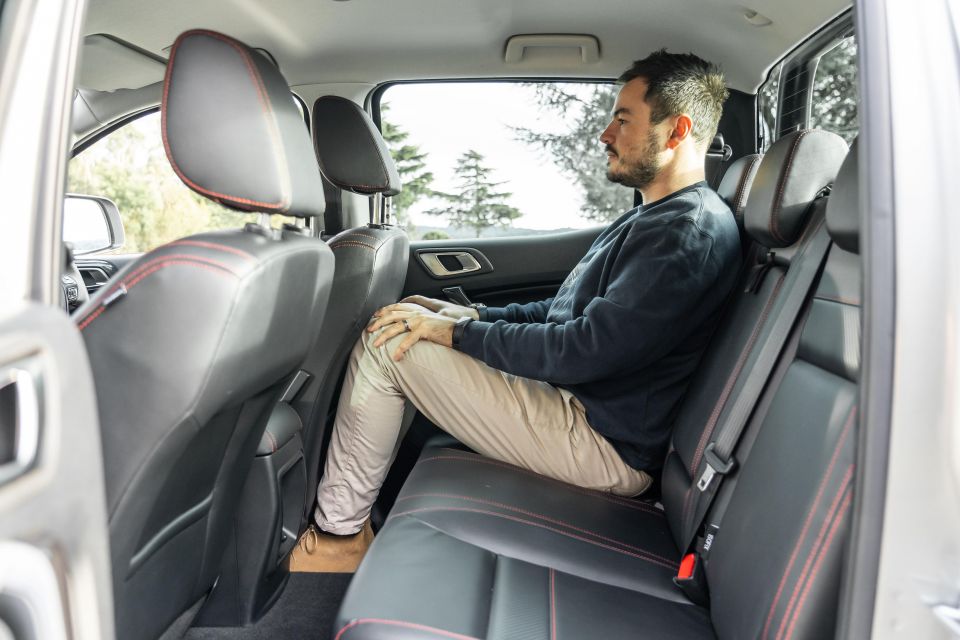
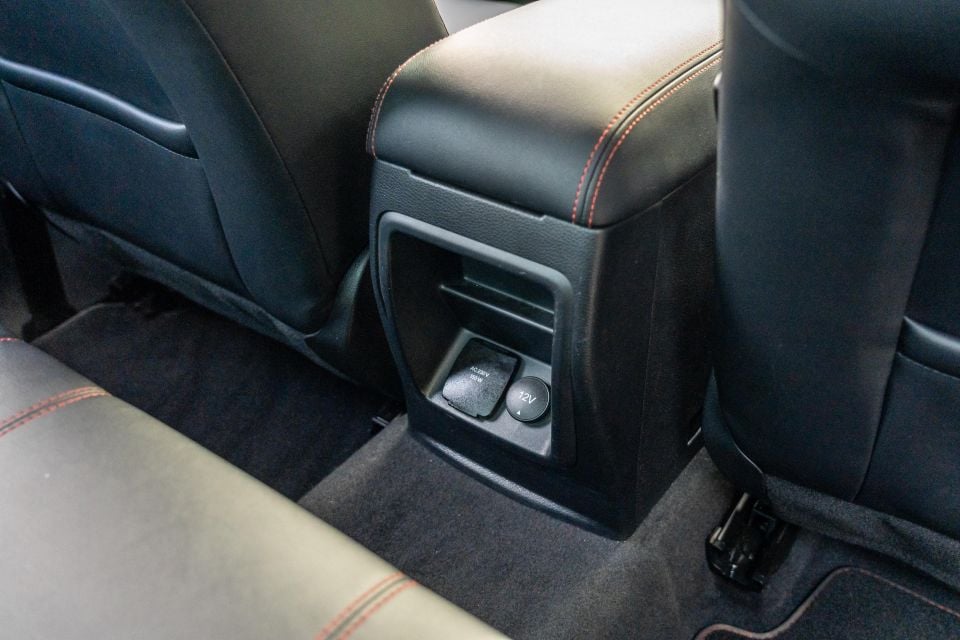

It’s easy to use, switches between menus quickly, and integrates both Apple CarPlay and Android Auto – in full screen, no less.
Ahead of the driver are two small LCD displays, with the left-hand side offering things like navigation and radio details, while the right-hand side houses a digital speedometer and trip computer information.
Leg room in the second row is quite poor with limited knee room but headroom and toe room are adequate. You won’t find any air vents in the second row, but you will find a 230V power outlet and a 12V socket.
There’s also a central arm rest and the second row base folds up for additional storage and the backrest folds down for access to top tether points. There are also ISOFIX anchorage points on the two outboard seats.
Another handy feature is the ability to hold the second row base upright to allow loading of objects across the car so you don’t damage the seats.
The tray features a torsion beam that makes closing the flip-down door easier on the way up by reducing the weighted motion. Load length measures 1549mm and load width is 1560mm, reducing to 1139mm between the wheel arches at its narrowest point.
While the Ranger is available with a 2.0-litre twin-turbocharged four-cylinder diesel for an additional cost, our test car was fitted with the 3.2-litre five-cylinder turbocharged diesel engine.
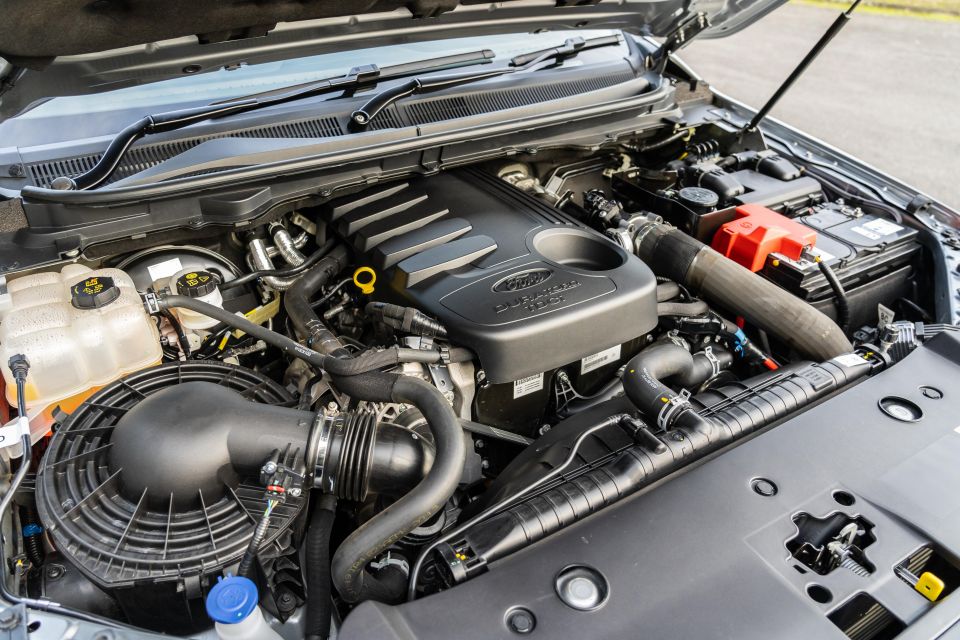
It produces 147kW of power and 470Nm of torque, and is available with a six-speed manual transmission or a six-speed automatic, with the automatic fitted to our car.
The combined fuel economy comes in at 8.4 litres of fuel per 100km for the five-cylinder diesel. We managed to achieve just under 10L/100km during testing with a mix of city, highway and country driving.
When you switch the 3.2-litre diesel on, there’s no mistaking it for anything other than a diesel.
It has a fairly gruff note and, even under light acceleration, it likes to make its presence known. Throttle response at low speeds is pretty good and it’s eager enough to make a move when required.
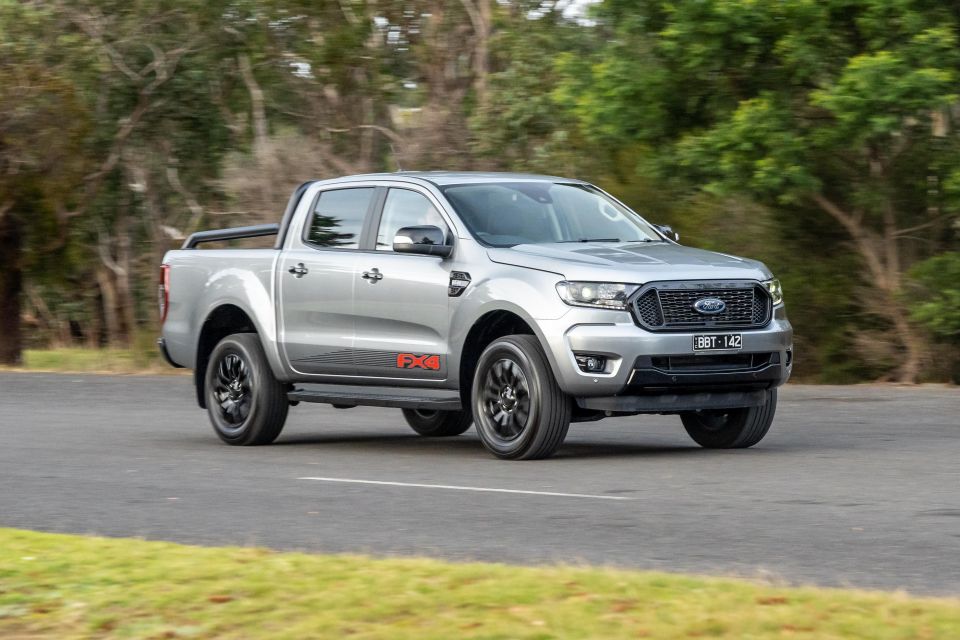

It actually almost feels as if the throttle graduation isn’t linear with minor inputs at the first part of the throttle travel being amplified. As you increase throttle input the level of acceleration doesn’t increase – so at the end of throttle travel it doesn’t feel like it accelerates any faster than it did at 50 or 60 per cent.
It’s one of the tricks some manufacturers often employ to make a vehicle feel more spritely than it actually is.
There’s no getting away from the fact this 2200kg ute has just 470Nm of torque available in a narrow band between 1750 and 2500rpm. That means it can be leisurely and even more so if you’re towing or carrying a load in the tray.
Speaking of which, it has a payload of 960kg and a braked-towing capacity of 3500kg, resulting in a GCM of 6000kg and GVM of 3200kg.
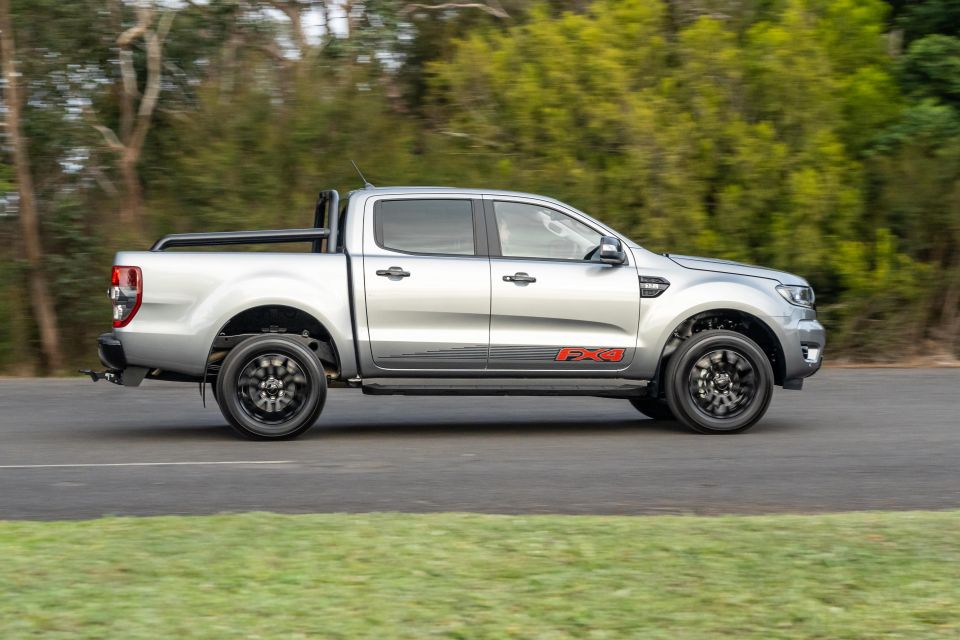
Off-road specifications offer 800mm of wading depth, 237mm of ground clearance, a 29 degree approach angle and a 21 degree departure angle.
Off-road hardware consists of a high- and low-range transfer case, rear differential lock (which can be activated in two-wheel drive mode) and the ability to switch between two-wheel drive high-range and four-wheel drive high-range on the move. There’s also a hill descent control mode available.
We didn’t do any off-road testing as part of this review, but have driven the Ranger off-road previously. It’s hard to fault given it comes standard with a wide range of off-road gear. Even the electronics are smart enough to keep things moving when the going gets tough.


In and around town, the Ranger handles bumps, speed humps and potholes nicely. The leaf sprung rear end copes well regardless of whether there’s a load in the track and remains mostly comfortable if driven as a daily driver.
On the highway it’s pretty quiet and it’s surprising that there isn’t a great deal of road noise that comes into the cabin from the tyres or wing mirrors at highway speeds.
Ford was one of the first manufacturers in this segment to ditch hydraulically-assisted steering and shift to an electrically-assisted steering rack. It’s all the better for it, because it isn’t artificially light, and still retains some level of steering feel and a degree of meaty weight to it.
It’s entertaining to drive and feels like a larger passenger car – it doesn’t feel overly big on the road or cumbersome to manoeuvre. Visibility out the front, sides and rear is good with front and rear parking sensors making life easier when parking in tight spaces. The reverse-view camera also has a zoom function to make attaching trailers easier.
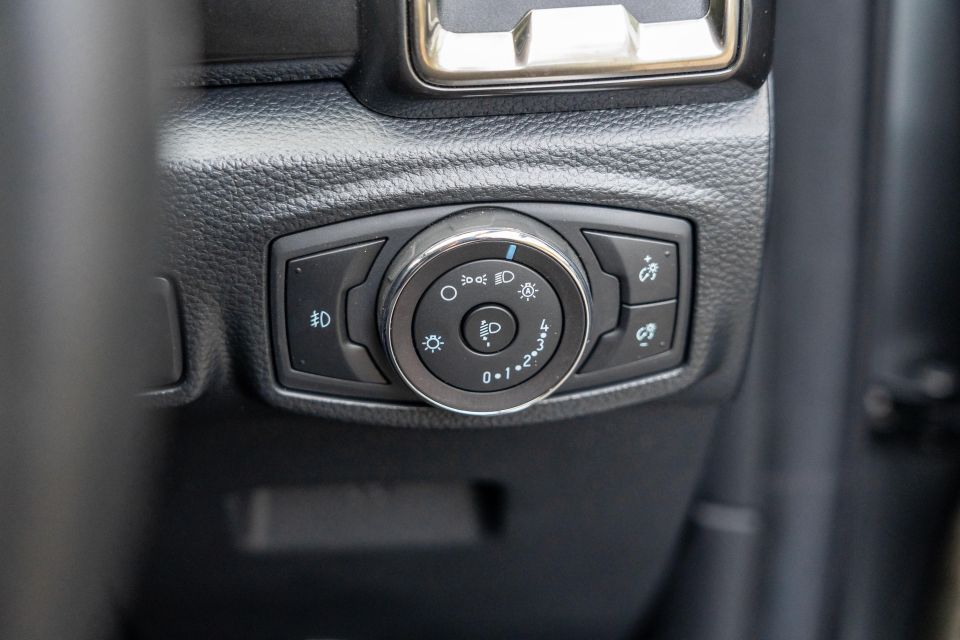
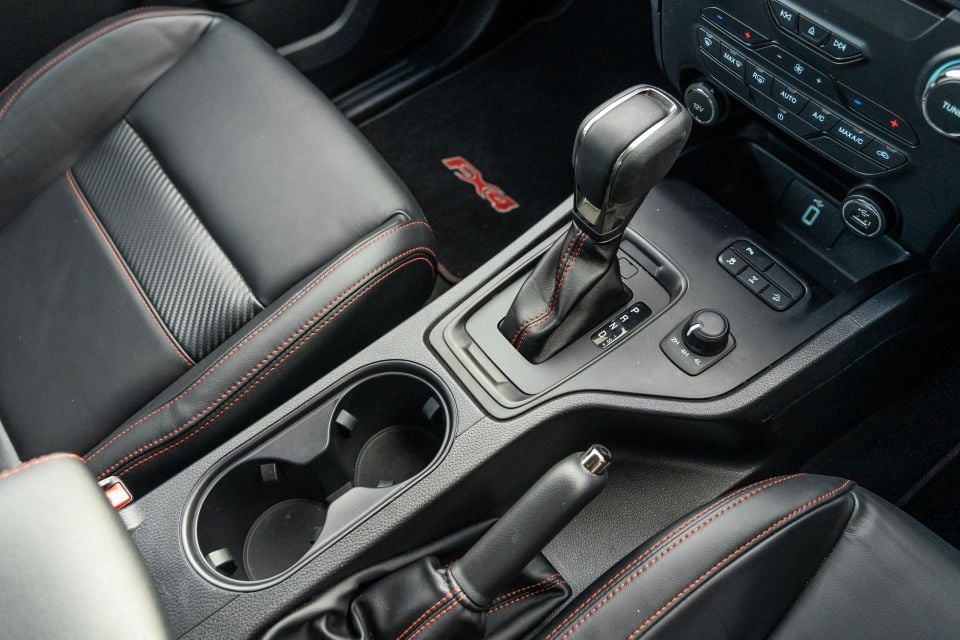

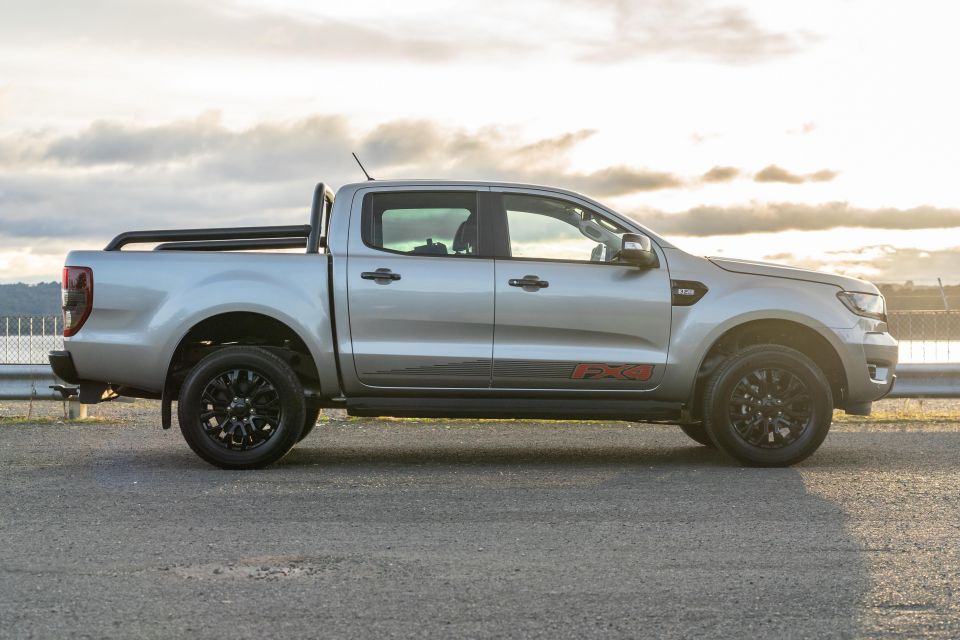
The Ranger works well as a rear-wheel drive vehicle, but you’ll notice some occasions where you can lose traction in the wet if you accelerate suddenly or power out of corners a little early. The Volkswagen Amarok dual-cab ute is the only vehicle in the segment with a full-time four-wheel drive system, with the Mitsubishi Triton offering an ability to switch to four-wheel drive on sealed surfaces, along with a rear-wheel drive mode for better efficiency.
The all-wheel drive system in the Ranger can only be switched while on unsealed surfaces due to the potential binding of the centre differential.
The Ford Ranger comes with a five-year, unlimited-kilometre warranty – and it’s worth noting that five-year warranty applies to Ford’s entire range, including vans and other commercial vehicles.
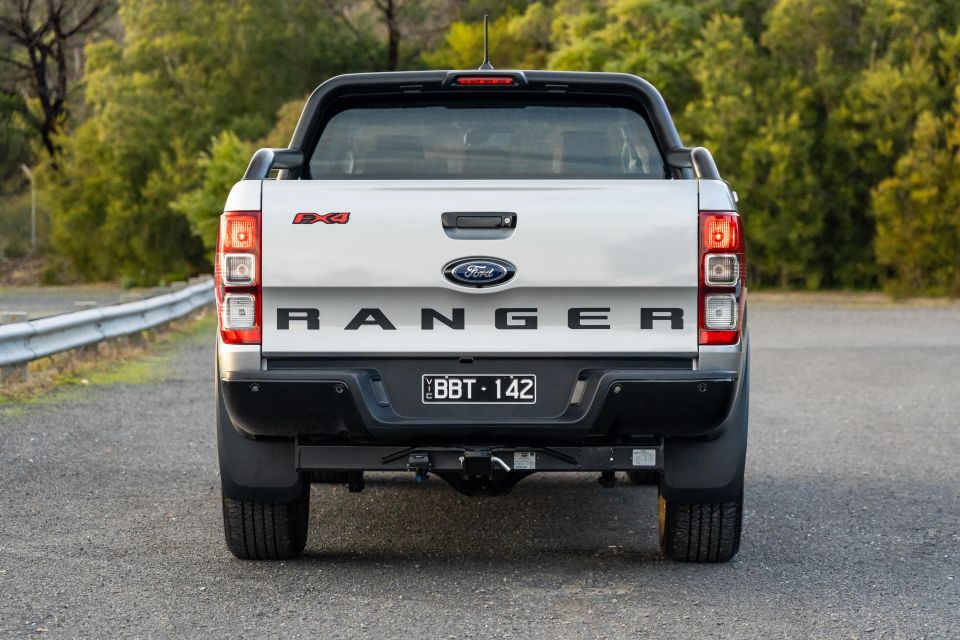
Capped-price servicing is also available, with service intervals occurring every 12 months or 15,000km.
Over a five-year period servicing costs $1716, which comes out to an average service cost of around $343 per service.
There’s a lot to love about the Ford Ranger. We often harp on about it being one of the best utes in the segment and that’s simply because it’s the truth.
Ford was early to jump on loading its utes with features and technology ahead of the competition, and it’s now reaping the rewards. The FX4 is another example of a Ranger model that’s hard to fault.
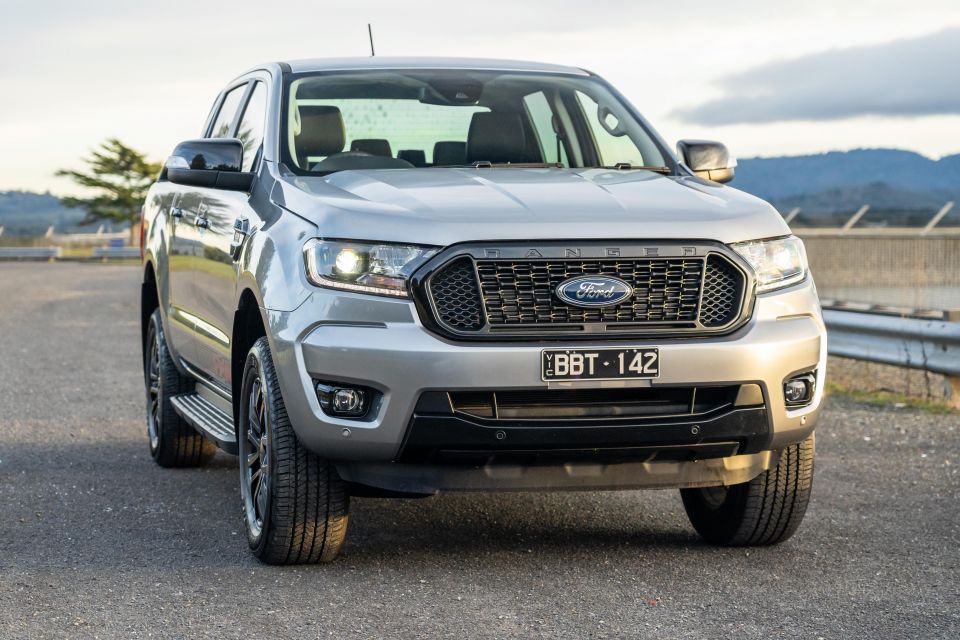
The 3.2-litre is starting to show its age – it’s not quite as refined as the 2.0-litre and Ford is desperately lacking a punchy V6 diesel to complete the range (but we believe a V6 Ford ranger one is being worked on at the moment). For the most part, however, it does the job perfectly fine.
But Ford’s days at and regularly close to the top could soon be over – Toyota has finally come to the table with a more powerful diesel engine and the all-new Isuzu D-Max is shaping up to be an all-rounder with more features and a decent engine.
Either way, this segment is hotting up at the moment and that’s only good news for buyers.
Where expert car reviews meet expert car buying – CarExpert gives you trusted advice, personalised service and real savings on your next new car.
Paul Maric is a CarExpert co-founder and YouTube host, combining engineering expertise with two decades in automotive journalism.


Damion Smy
12 Hours Ago


Damion Smy
14 Hours Ago


Ben Zachariah
3 Days Ago


Matt Campbell
3 Days Ago


Derek Fung
7 Days Ago


Damion Smy
10 Days Ago